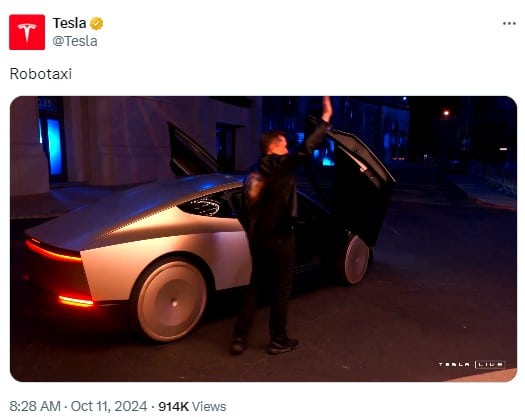Tesla is set to unveil its highly anticipated “robotaxi” prototype, the “Cybercab,” on Thursday night, aiming to impress investors after years of delays in AI-driven self-driving cars. However, experts believe the vehicle may not be ready for public roads just yet.
Musk announced that production might start as early as 2026, with plans for the vehicle to cost less than $30,000. This launch aims to impress investors after years of delays in bringing AI-driven self-driving cars to the market.

Whereas competitors such as Alphabet’s Waymo are already running robotaxi services in different cities, Tesla is approaching the issue differently. Unlike most competitors who use a combination of sensors such as radar and lidar, Tesla’s approach is to use only computer vision and end-to-end machine learning.
This method applies the use of cameras to simulate how human beings view and respond to situations while driving. However, there are some difficulties in this case. Lacking other layers of safety technology, the Tesla system fails to perform in the so-called “edge cases,” which are important but happen only occasionally.
The problem with this method is that critics argue that it is rather risky. One of the ex Tesla employees referred to the technology as a ‘black box’ meaning it is difficult to identify what goes wrong in the event of an accident. Other industry experts have similar sentiments, noting that there is a problem with the opacity of the autonomous driving systems.
Nevertheless, Tesla has to go for robotaxis as its sales have reduced due to growing competition from other EV makers, especially from China. The market could be revolutionized by Tesla’s affordable robotaxis if the company is successful.
Musk has made such statements before, saying that cars with no steering wheel at all will soon become the norm. But, some of them are of the opinion that it will take Tesla several years to offer the level of autonomy as that of competitors like Waymo.
As the unveil nears, investors keep their fingers crossed as well as their eyes open. It remains to be seen whether Tesla can really make good on the company’s words of a safer, self-driving world.
Also Read: OpenAI Expands Globally, Seeks Engineers for AI Development








